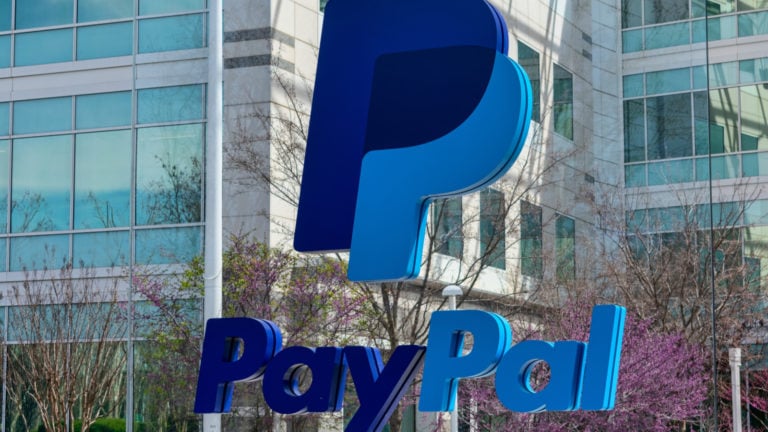PayPal’s (NASDAQ:PYPL) Jan. 30 announcement that it was cutting 9% of its global workforce (about 2,500 employees) did not surprise investors. Much of the PayPal stock analysis, since Alex Chriss was appointed as CEO of the digital payments company last August, revolved around the changes required to make it a more agile company.
“Today, I am writing to share the difficult news that we will be reducing our global workforce by approximately 9% through both direct reductions and the elimination of open roles over the course of the year,” Chriss stated in PayPal’s corporate announcement.
“We are doing this to right-size our business, allowing us to move with the speed needed to deliver for our customers and drive profitable growth. At the same time, we will continue to invest in areas of the business we believe will create and accelerate growth.”
Chriss focused on three subjects in his announcement: Company size, delivering for its customers, and profitable growth. If PayPal gets all of these right, there’s no question its current share price is the buy of a lifetime.
Of course, it has to get there first.
The Right-Sized Footprint
Jack Welch, the former CEO of General Electric (NYSE:GE), was a big believer in getting rid of a company’s dead weight, the bottom 10%.
“..(removing the bottom ten per cent of employees) works because we spent over a decade building a performance culture with candid feedback at every level,” High performance coach Ross Clennett quoted Jack Welch’s 2001 book, Jack: What I’ve Learned Leading a Great Company and Great People.
Does the 9% cut by PayPal seem like a percentage chosen to avoid copying the legendary CEO’s modus operandi? I think it is.
In January 2023, the company cut 2,000 people from its workforce. That was 7% overall. So, with the latest announcement, by the end of 2024, it will have cut 4,500 people from its payroll.
According to its 2023 proxy, the average PayPal employee earned $77,244. With approximately 27,778 employees before the latest cuts, the company is eliminating nearly $200 million in employee compensation. If you assume benefits cost a company about 25-40% of the average employee’s annual salary, that’s another $63 million it saves in operating expenses.
So, over the past two years, it will have cut $461 million from its annual operating expenses [$77,244 times 4,500 employees = $378 million x 32.5% (cost of benefits)].
Delivering for Customers
That’s not chump change.
As part of Bloomberg’s reporting on the recent job cuts, it pointed out that Chriss Stated in its Q3 2023 earnings call that the company had too many operating expenses and, more importantly, the number of employees made for a complex structure.
Translation: Its bureaucracy is killing its leadership position in fintech.
“I have spent as much time as possible with as many of you as possible to learn about our company’s great strengths, as well as where we need to move faster, where we need to change, and what we need to do to instill a culture of innovation that returns our company to the true position of strength it deserves,” Chriss stated in his announcement.
That all reeks of corporate malaise. And shareholders have paid for it. PYPL stock has lost 80% of its value since hitting an all-time high of over $310 in July 2021.
It’s not about delivering for customers. Chriss politely stated that the company had gotten lazy and fat. And the culture’s got to change if the business wants to survive and thrive.
Profitable Growth
I went back to 2015, when it was spun off from eBay (NASDAQ:EBAY), to look at its margins. According to S&P Global Market Intelligence, its gross margin in 2015 was 51.0%, 1,080 basis points higher than in the trailing 12 months ended Sept. 30. At the same time, its operating margin in 2015 was 13.3%, 40 basis points higher.
What does that tell you?
It tells me that Chriss isn’t honest with his employees or shareholders. If PayPal were so slothlike and full of waste, its operating margins would be much lower than they are.
I believe that margins have become a lot more variable. In 2015 through 2017, the operating margins were 13.3%, 12.9%, and 13.7%—a variation of 80 basis points from top to bottom. From 2020 through 2022, they’ve been 19.6%, 16.4%, and 8.8%, a much more significant discrepancy. And, yes, they are headed in the wrong direction.
So, a little bit of bloodletting is required to bring some stability to the operating margin.
However, the bigger issue is the gross margins, which suggests that the CEO is right about one thing: it has got to become a culture of innovation because that is where higher gross margins come from.
If you’re a risk-tolerant investor, I think you nibble at these prices, waiting for a clear indication that it’s on the mend. That probably won’t be until 2025. That’s my conclusion of this PayPal stock analysis.
On the date of publication, Will Ashworth did not have (either directly or indirectly) any positions in the securities mentioned in this article. The opinions expressed in this article are those of the writer, subject to the InvestorPlace.com Publishing Guidelines.

